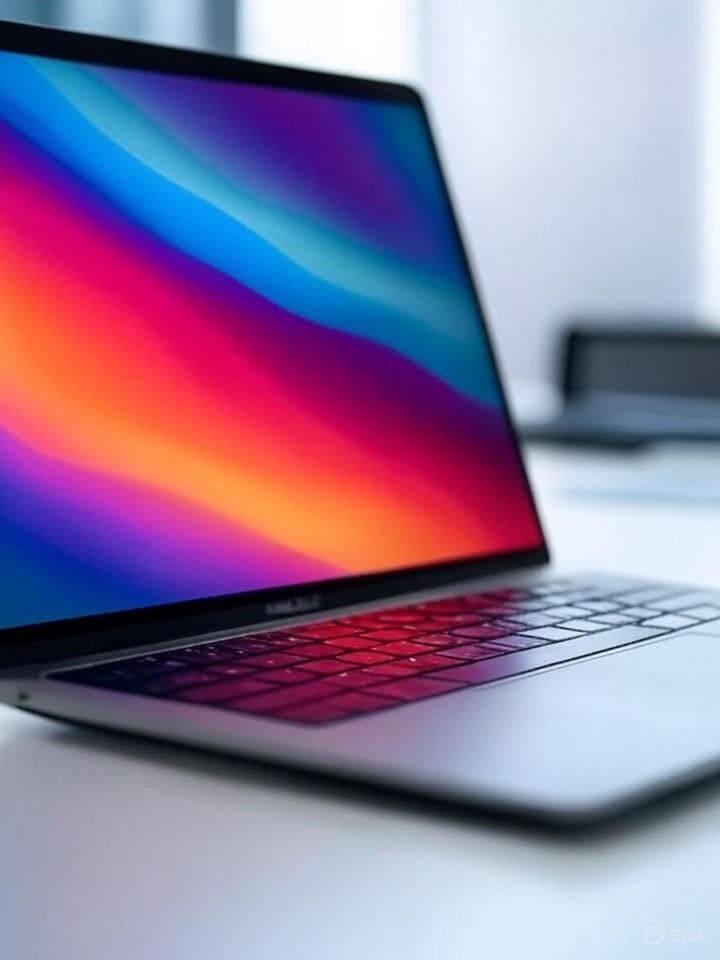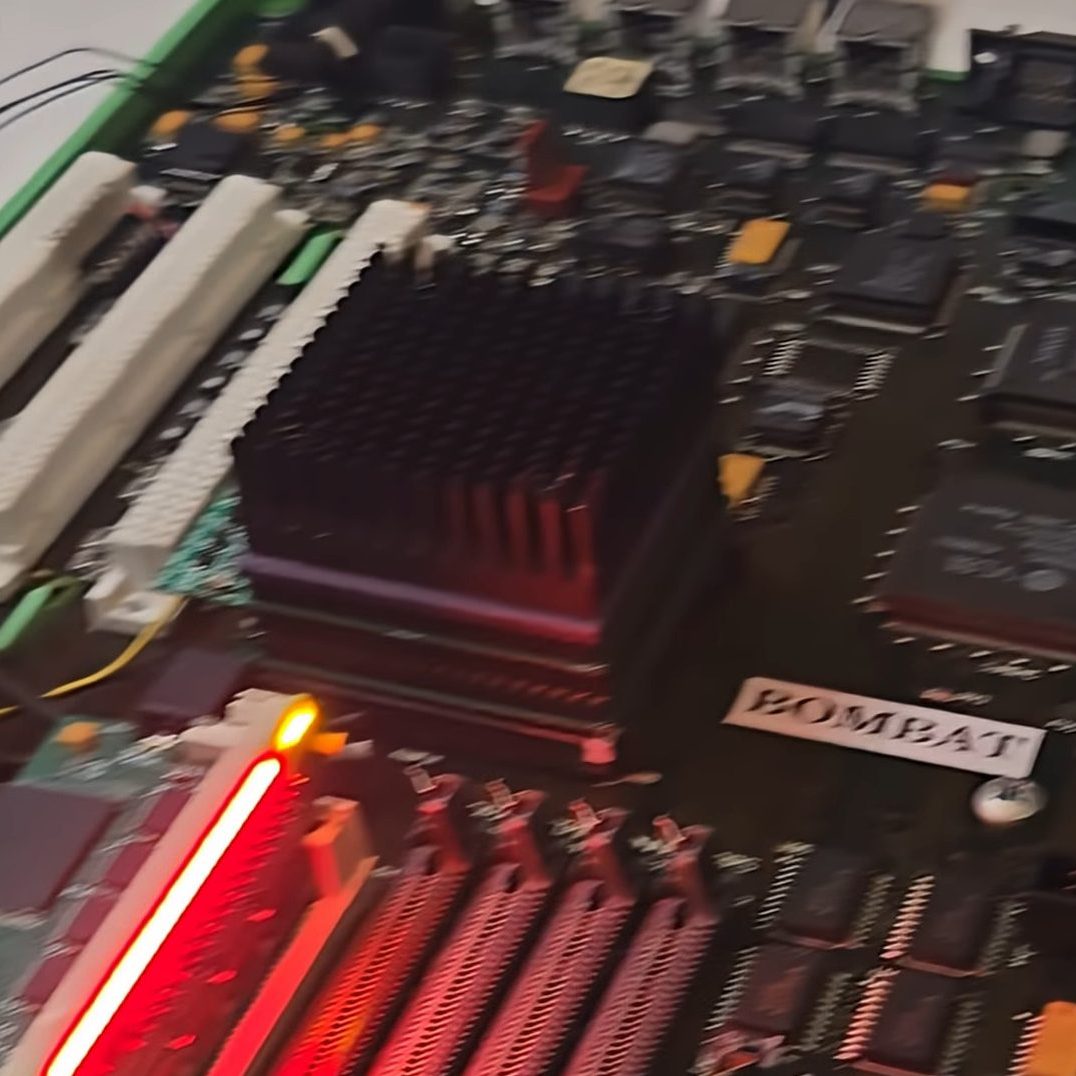Apple Inc. plans to significantly enhance its MacBook Air lineup by introducing organic light-emitting diode (OLED) technology by 2028. This anticipated shift aims to elevate the visual quality of the MacBook Air, aligning it with the premium displays found in Apple’s iPhones and higher-end iPads. The transition to OLED is expected to improve color accuracy, contrast, and energy efficiency, setting new expectations for users in the portable computing market.
Transitioning to OLED: A Strategic Move
The inclusion of OLED screens represents a strategic change for Apple, which has historically utilized liquid crystal display (LCD) panels in its more affordable MacBook Air models. Industry insiders suggest that this upgrade is part of a broader initiative to standardize advanced display technologies across Apple’s product ecosystem. Reports from Digital Trends indicate that Apple is on track to roll out OLED displays, enhancing color quality and dynamic range capabilities.
Bloomberg has further revealed that the company’s plans include not only the MacBook Air but also upgrades for the iPad Air and iPad Mini. Mark Gurman from Bloomberg noted that the iPad Mini could see this enhancement as early as 2026, with the goal of providing a consistent user experience across devices.
Challenges and Innovations in Supply Chain
The transition to OLED is fraught with challenges. Apple is collaborating with suppliers like Samsung and LG to produce OLED panels that meet its high standards. A report from 9to5Mac highlights that Apple is currently testing these screens, with the smaller iPad Mini likely to be the first product to feature the upgraded display.
Industry analysts point out potential hurdles, including increased manufacturing costs and burn-in issues typically associated with OLED technology. Nonetheless, advancements in tandem OLED structures could alleviate some of these concerns, enhancing brightness and longevity, as reported by NotebookCheck.net.
The MacBook Air, which has consistently been Apple’s best-selling laptop, has faced criticism regarding display quality compared to the MacBook Pro models. An OLED upgrade could significantly enhance its appeal, particularly among creative professionals who require superior visual fidelity. MacRumors indicated that an interim upgrade involving LCD screens with oxide backplanes might occur in 2027, serving as a transitional step towards full OLED implementation.
Broader Implications for Apple’s Product Ecosystem
Beyond the MacBook Air, Apple’s commitment to OLED extends to its tablet lineup, with plans for the iPad Air and iPad Mini to adopt this technology. This synchronization could create a more cohesive user experience, utilizing Apple’s M-series chips for optimized performance. The push for OLED displays is also seen as a response to competitive pressure from rivals such as Samsung, which already offers OLED laptops.
As reported by Gurman, the goal is to elevate MacBook visuals to the quality seen in iPhones, potentially fostering increased consumption of HDR content on Mac devices. As consumers eagerly await these upgrades, discussions on platforms like X have highlighted expectations for improved color reproduction, with some users referencing the 2018 MacBook Air’s Retina display as a benchmark in need of evolution.
Potential Price Adjustments and Market Position
While the anticipated upgrades are likely to enhance the MacBook Air’s market position, they may also lead to increased prices. Analysts from Macworld predict that the entry price for the MacBook Air could surpass its current starting point of $999. The challenge for Apple will be to improve its offerings while keeping the product accessible to budget-conscious consumers.
The company’s track record of incremental improvements, such as the introduction of the M4 chip in March 2025, suggests a cautious approach to rolling out this new display technology.
Technological Innovations Driving the Change
The core advantage of OLED technology lies in its ability to produce perfect blacks and infinite contrast ratios, far exceeding current LCD capabilities. As noted by NotebookCheck.net, Apple’s planned implementation may incorporate high refresh rates and anti-reflective coatings, addressing common complaints about glare and motion blur.
Additionally, there is potential for integration with Apple’s AI features, leveraging OLED’s capabilities for enhanced image processing. As of October 2025, suppliers are reportedly ramping up production capacities, indicating that Apple is committed to this ambitious transition.
Market Dynamics and Future Outlook
Apple’s move towards OLED technology could have substantial implications for the laptop market, prompting competitors to accelerate their own innovations in display technology. Insights from industry accounts suggest that Apple’s stock may benefit from these advancements, reflecting positive market sentiment.
As the company prepares for this transition, the timing aligns with increased demand for high-quality portable devices, fueled by the rise of remote work and digital content creation. Reports from AppleInsider earlier in 2025 indicated that oxide LCD panels might serve as a preliminary step in the multi-year plan towards OLED adoption.
With supply chain optimizations and potential partnerships with manufacturers in China, Apple is poised to scale production efficiently, potentially establishing OLED as the new standard for mid-range devices. By 2028, the MacBook Air is expected not only to feature superior displays but also to incorporate advanced chipsets, solidifying its competitive position in the marketplace.







